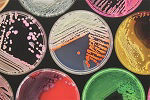Report: Monitoring the potential for antibiotic resistance

An MPI report, released today, looks at trends of antibiotic use to enable monitoring of the potential for antibiotic resistance in food-producing animals and companion animals.
MPI Deputy Director-General Standards, Carol Barnao says the report on antibiotic sales analysis from 2009-2011 noted that overall the use of antibiotics in veterinary medicine and horticulture appears to have decreased by 19%.
“We understand that this reduction is largely attributable to positive changes in production animal management in the pig, poultry and dairy industries. These industries have reported a move towards non-antibiotic preventative treatments like vaccination and changes to on-farm practices to decrease their antibiotic use,” she says.
The analysis also revealed areas that will need further review. These include the increased use of: injectable tylosin in cattle; third and fourth generation cephalosporins in production and companion animals; and the reported marketing and choice of antibiotics which appear to be based on convenience rather than what may be the most appropriate therapeutic choice.
“As a result of this information, MPI will gather further information and look at controls around the marketing and use of antibiotic products to determine they effectively manage risks associated with antibiotic resistance,” says Ms Barnao.
In addition, the New Zealand Veterinary Association (NZVA) and industry groups such as NZ Pork and the Poultry Industry Association New Zealand (PIANZ) have published guidance for the prudent use of antibiotics within industry, and further guidance and updates from NZVA is in progress.
Report: Antibiotics Sales Analysis: 2009-2011
FAQ’s
Q. Why is the reporting period so long and two years out of date?
A. This report required considerable consultation with industry and selected individual veterinarians. As a consequence a lot of time was needed to confirm figures and collate feedback from industry representatives and members of the veterinary profession. There were many lessons learned that will help the next release of data. The next report will cover 2011-2013 and we expect it will be released by June 2014. Thereafter, reports will be released annually.
Q. What is the significance of the findings that you will need to further review, and what does that ‘review’ entail?
A. The information on use is collected from individuals and reflects the comments provided to MPI. This needs to be verified so that any action taken is effective and we also need to ensure that changes in farming methods, such as the move to free- range farming is taken into account.
Q. What is the consequence of an increased use of injectable tylosin in cattle?
A. Tylosin is an antibiotic in the class of antibiotics known as Macrolides, a class important to human medicine. Tylosin is important in veterinary medicine, and its use is critical to the management of certain infections not responsive to other antibiotics. It is important that the trend of increased use of injectable tylosin in cattle is investigated and addressed to ensure that the potential risk of antibiotic resistance is limited while maintaining the availability of tylosin for veterinary use.
It is not used in human medicine, but the development of tylosin resistance has the potential to confer cross-resistance to other antibiotic in its class. Information from industry has indicated an increasing use of tylosin in dairy cattle for the treatment of mastitis, because it is a convenient once-daily injectable treatment.
MPI intends to work with the dairy industry and veterinarians to verify if this is a trend.
Q. Why is there an increased use of third and fourth generation cephalosporins in production and companion animals and what is the consequence of that?
A. The cephalosporin class of antibiotics are divided into generations, with each successive generation having greater activity than the last. The third and fourth generation cephalosporins are considered essential to human medicine, and according to the Expert Panel on Antibiotic Resistance, their use should be reserved for critical or life-threatening infections in veterinary medicine. While these antibiotics all carry additional label warnings on their choice and use, the sales and use of third and fourth generation cephalosporins are increasing.
The use of third generation cephalosporins, especially in companion animal medicine, has reportedly increased due to both therapeutic need and the marketing of these drugs based on convenience, customer compliance and simplicity.
It is noted from the data and use information provided for the fourth generation cephalosporin, registered for use in dairy cattle, that the increased use of this antibiotic is genuinely based on therapeutic need. This is the only fourth generation cephalosporin used in veterinary medicine.
Q. Why does industry choose antibiotics based on convenience rather what is the most appropriate therapeutic choice?
A. Some products have a zero or short withholding period following use which means that there is no need to separate animals or their milk which has a benefit for farmers. MPI will work with the Veterinary Industry and with user groups to verify if this is a trend so action can be taken. In other situations, some antibiotics can be used as a “one shot dose” (long acting) which has advantages to both farmers and companion pet owners.
Q. How does New Zealand’s use of antibiotics and resistance status compare to other countries?
A. The year-long baseline survey carried out by MPI in 2009-2010 focused on antimicrobial resistance to important and commonly used antibiotics among E. Coli, Enterococcus, Campylobacter and Salmonella bacteria found in freshly dressed carcasses of calves, pigs and broiler poultry from New Zealand abattoirs and processing plants. It also included samples of Salmonella and E. Coli isolated during a survey of fresh produce in 2008-2009.
The survey indicated that our farming community was using antibiotics responsibly in compliance with veterinarian advice, and the little resistance found had no direct implications for human health.
Comparing results from this survey with the limited data available from earlier New Zealand studies on bacteria isolated from animals suggested there has been no increase in resistance in food-producing animals in New Zealand.
Compared with 2009 data from the Danish DANMAP surveillance system, which uses a similar methodology to that used in this survey, resistance among bacteria from New Zealand pigs and poultry was either lower or not significantly different.
Q. Does MPI have the confidence that the veterinary use of antibiotics is being managed effectively?
A. The control of use of veterinary antibiotics in New Zealand meets international best practice recommendations. This report has provided some opportunities to verify practices and to further refine controls if needed.
Q. What does MPI mean when it says it will look at ‘controls around marketing’ – what does that look like?
A. Under the ACVM Act, “advertising” includes written, printed, spoken or pictoral representation used to promote the sale of a product, and includes the product label and any New Zealand-owned websites. All registered veterinary medicines are subject to controls around product advertising as part of their registration, such as the requirement that the advertising cannot make false or misleading claims about the product and that labels must contain sufficient information for safe and effective use. In addition to these controls, all antibiotics important to human health are classed as Restricted Veterinary Medicines (RVMs), which are subject to additional controls, such as that they must clearly state that they are restricted and only available under veterinary authorisation, and any other controls applied to the product (i.e. “must be used as per label”, etc.).
MPI will be looking into the issues raised by the report to determine if additional guidance is needed or if the existing controls on advertising need to be changed for antibiotic veterinary medicines.
Join 26,000+ subscribers
Subscribe to our newsletter to stay updated about all the need-to-know content in the feed sector, three times a week. Beheer
Beheer









 WP Admin
WP Admin  Bewerk bericht
Bewerk bericht